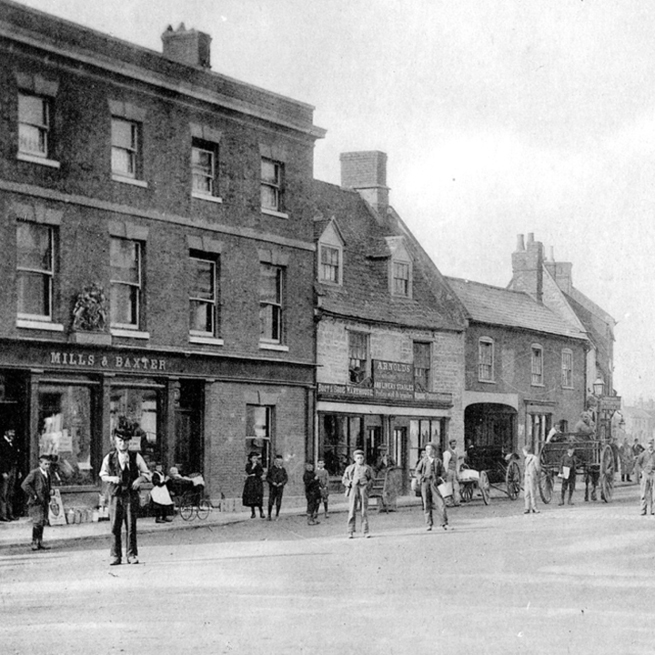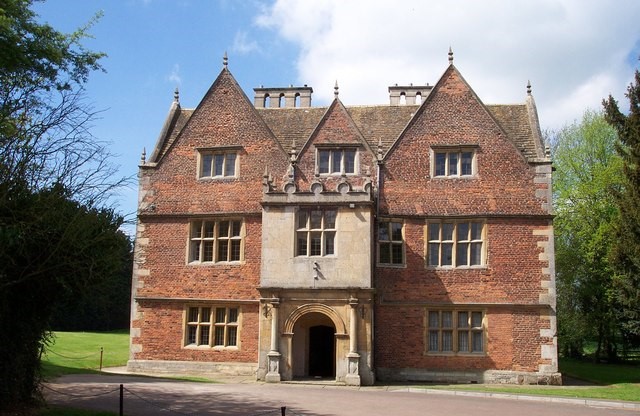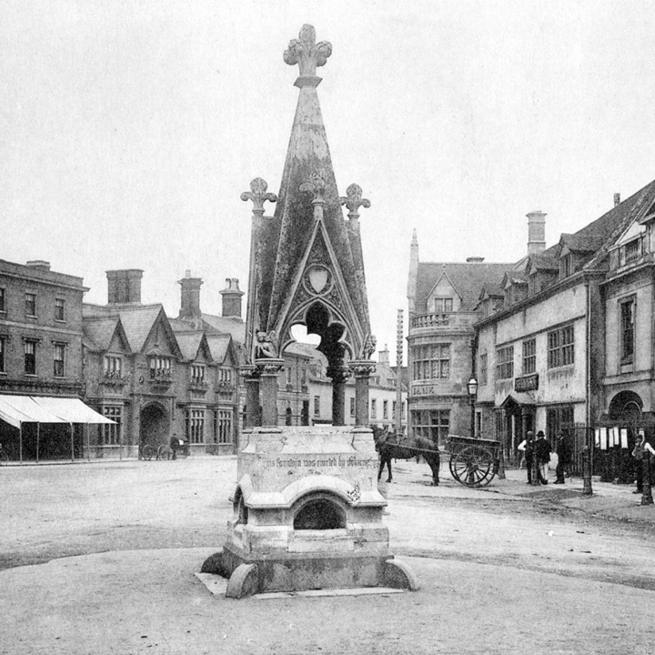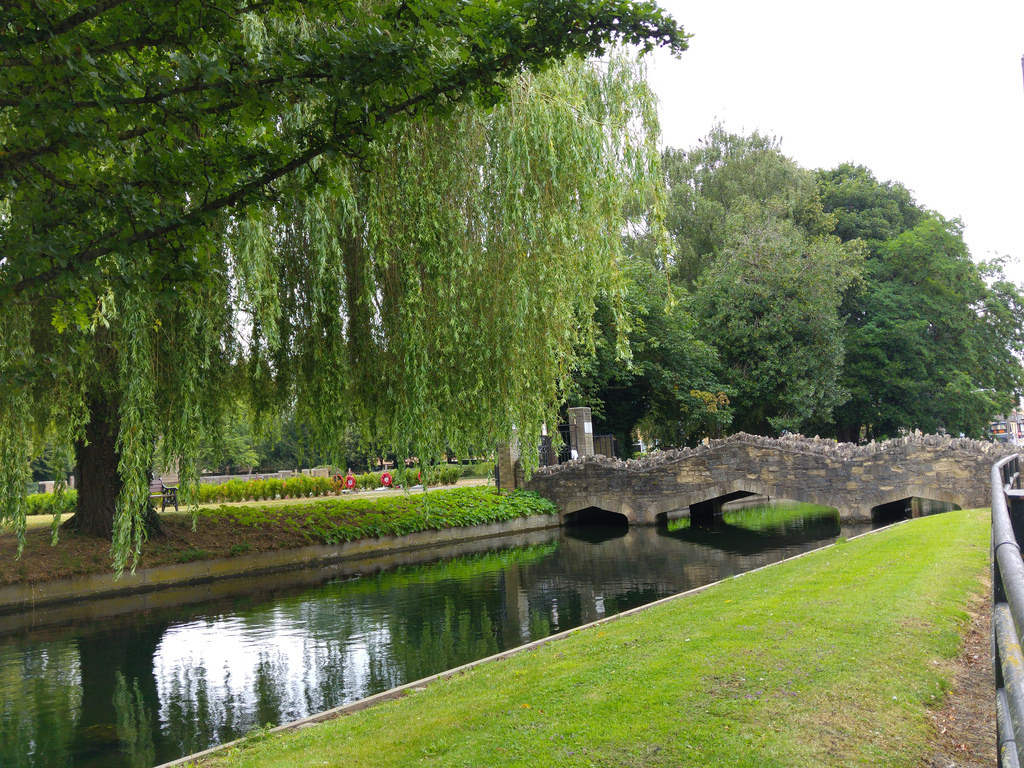Bourne’s Unique Identity
Draft Objectives
Bourne’s Unique Identity And Heritage
Draft Objective NE1
To conserve and, where possible, enhance Bourne’s distinctive historic character as a market town.
Draft objective NE2
To protect and, where possible, enhance key landscape and townscape features and important views.
Heritage
Heritage plays an important part in shaping how we perceive and experience a place and in making it unique. It helps to attract business investment and visitors, and it can be used to raise the quality of design.
The Local Plan indicates that heritage assets and their settings should be protected and enhanced. Within the Neighbourhood Area there are over 70 listed buildings and structures of national importance and two Scheduled Monuments – Bourne Castle and part of the Car Dyke to the south of the village of Dyke. These heritage assets are given a high degree of protection as part of the planning system. Details of each listing can be found on the Historic England website. The majority of the listed buildings are situated in and around the town centre, although there are other small clusters in Eastgate, Dyke and Cawthorpe.
The town centre is the focus of the Bourne Conservation Area; an area of special architectural or historic interest, the character of which it is desirable to preserve or enhance. The special qualities of the area are explained in the Bourne Conservation Area Appraisal and Management Plan (the Appraisal). Within the conservation area there are extra planning controls; for example, consent is required to demolish a building, even if it is not listed, and permission is required for some types of development that would not otherwise require planning permission.
The Conservation Area Appraisal outlines a number of risks to the character of the Conservation Area including unsympathetic alterations to buildings and shopfronts; unsympathetic post-war buildings with flat roofs; unauthorised works; the loss of historic street furniture and floorscapes; excess signage and clutter; and the loss of important boundary features.
The Bourne Shopfront Design Guide provides guidance on conserving and enhancing the character of shopfronts within the town while the Bourne Conservation Area Planning Guide provides guidance for households and businesses within the Conservation Area.
The Appraisal identifies a number of buildings which, although not listed, contribute towards local architectural or historic interest. However, such buildings are not confined to the Conservation Area and can be found in the wider Neighbourhood Area. The significance of these buildings can be better taken into account when determining planning applications if they are identified on a local list.
The Ostler Memorial Drinking Fountain once acted as the focal point of the Market Square. It was removed in 1962 as part of a road improvement scheme and was re-erected in Bourne Cemetery. It has been suggested that the Memorial should be reinstated at the heart of the Market Square.
The Red Hall, Bourne’s most important secular building, is at present hidden away behind commercial premises in South Street. It has been suggested that steps should be taken to increase its visibility from South Street by redevelopment where possible or at least by the provision of a formal access drive and, if possible, the reinstatement of the ornamental arch on South Street.
The Conservation Area Appraisal outlines a number of risks to the character of the Conservation Area including unsympathetic alterations to buildings and shopfronts; unsympathetic post-war buildings with flat roofs; unauthorised works; the loss of historic street furniture and floorscapes; excess signage and clutter; and the loss of important boundary features.
The Bourne Shopfront Design Guide provides guidance on conserving and enhancing the character of shopfronts within the town while the Bourne Conservation Area Planning Guide provides guidance for households and businesses within the Conservation Area.
The Appraisal identifies a number of buildings which, although not listed, contribute towards local architectural or historic interest. However, such buildings are not confined to the Conservation Area and can be found in the wider Neighbourhood Area. The significance of these buildings can be better taken into account when determining planning applications if they are identified on a local list.
Important landscape features and views
The key features of the local landscape are as follows:
- Bourne Wood, which provides the western edge of the Neighbourhood Area with a wooded skyline and can be appreciated from numerous locations;
- the extensive flat, low lying landscape of the Fens on the east side of the Parish;
- the Bourne-Eau, a short, embanked river and distinct landscape feature which flows outwards from the town to join the River Glen;
- the Car Dyke, an ancient waterway which runs north/south through the eastern part of Bourne
Important views are those that you might expect to see on a postcard of the area. These might include views within settlements; out from the settlement into the countryside; and views of a settlement from the adjoining countryside. These views must be from a public place rather than private land. Typical key views include those of local landmark buildings such as a church tower, an important group setting of buildings or picturesque views of the surrounding landscape which are not simply ‘a nice view of open countryside’ but are particularly picturesque.
5.11 A number of important views were identified as part of the Bourne Conservation Area Appraisal and Management Plan (see paragraph 5.3). In addition the Bourne Character Assessment (see paragraph 8.11) will identify other key local landscape and townscape views.

Supported By Bourne Town Council
Contact
Bourne Town Council
SK Community Point
3 Abbey Rd
Bourne
PE10 9EF
enquiries@bournetowncouncil.gov.uk




